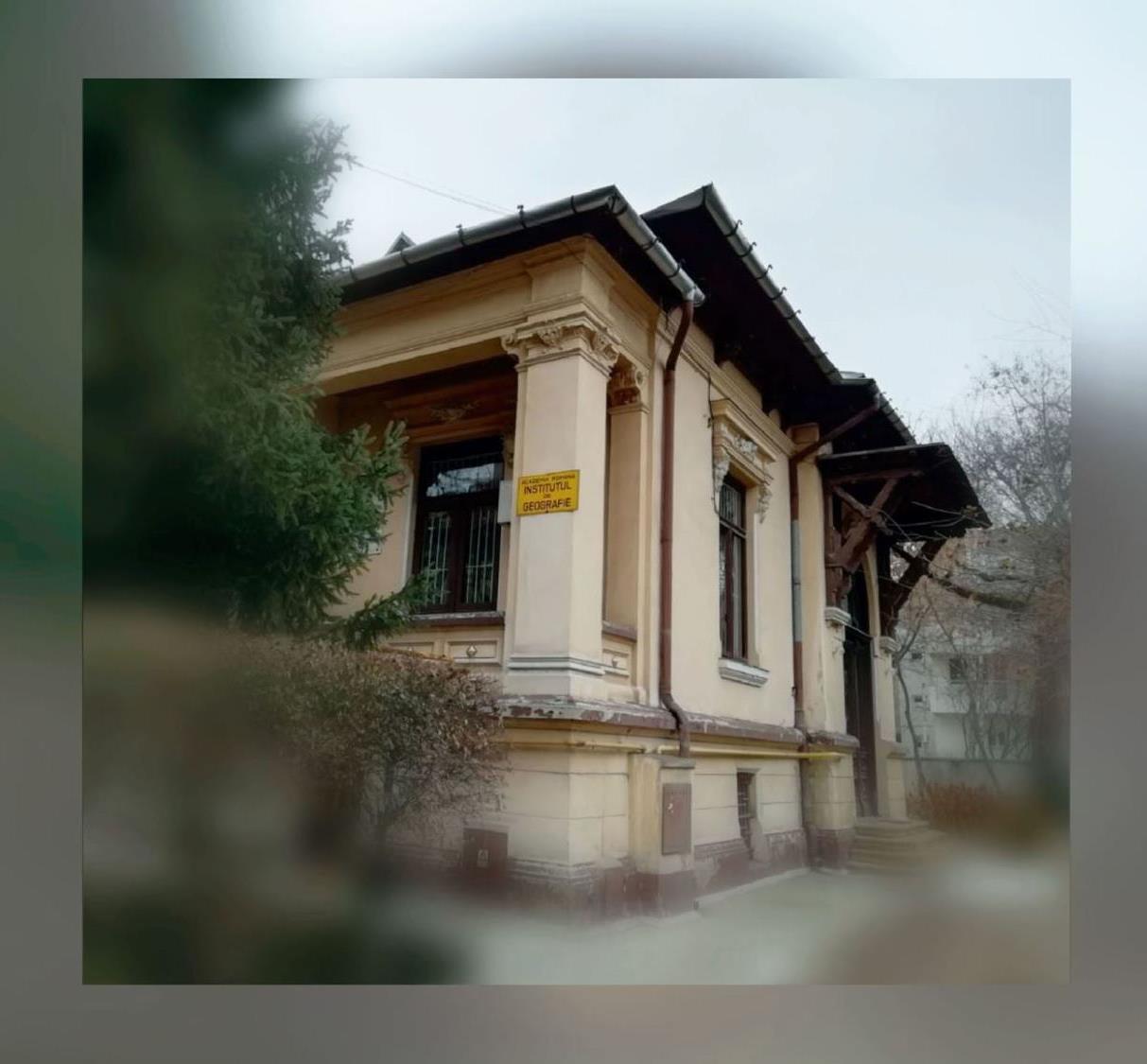The Institute of Geography of the Romanian Academy

Research Activities.
The Institute of Geography (IGAR) of the Romanian Academy, located in Bucharest, with two branches (in Cluj-Napoca and Iaşi), is the main institution of fundamental and applied geographical research in Romania.
It carries out integrated research in Geomorphology, Hydrology, Biogeography, Climatology, GIS Systems, Human Geography and Environmental Geography focusing on investigating the relationships between the
components of the physical and biotic environment (relief, water, soil, vegetation and fauna) and of the social and economic milieu, as well as their spatial distribution in connection with global environmental change.
Its expertise in studying man-environment relations (GIS-based integrated studies of natural and technological hazards; integrated studies of community vulnerability to extreme events etc.)
has materialised in several national and international projects.
The Institute of Geography is involved in projects financed by the Romanian Academy, such as: The Environmental Geographical Atlas, programmes regarding studies of current geographical conditions of the Lower Danube Sector
and of the Romanian Black Sea Coast and natural protected areas; Studies regarding the settlement systems in Romania in the context of sustainable development;
Romanian financed and international projects (e.g. FP6, FP7 and HORIZON 2020).
The members of the Institute participate in a series of national and international interdisciplinary programmes, have membership in
several IGU Commissions, and contribute to the activity of the National Committees for:
Future Earth-Research for Global Sustainability,
International Hydrological Programme (IHP-UNESCO),
Man and the Biosphere Programme (MAB),
and are involved in national environmental protection projects, in the complex study of the Danube Delta, etc.
Teaching Activities.
The Institute of Geography develops activities at Ph.D. level, having 6 doctoral supervisors who coordinate Ph.D students in several domains of Geography.
The Institute of Geography hosts each year The International Summer School on Natural Hazards and Sustainable Development in Mountainous Regions at the Research Station in Pătârlagele.
Brief Overview.
The Institute of Geography was established in 1944 by the Ministry of National Culture and the Cults, on the initiative of Prof. Vintilă Mihăilescu. The then Geographical Research Institute of Romania, as its name was,
had two branches, one in Cluj, the other in Iasi.
In the beginning, it was staffed with members of the Geography Chair who took an interest in research. After 1952, the Institute would train its own specialists in various
fields of geography. Between 1958 and 1974, it functioned as research institution of the Romanian Academy, one year later (1974-1975), becoming subordinated to the Ministry of Education and Instruction. In 1975, it passed
under the administration of Bucharest University. As from the 7th of February, 1990 it lists again in the structure of the Romanian Academy.
In the course of time, the Institute of Geography numbered oustanding Romanian scientists among its members, e.g. academicians
-Vintilă Mihăilescu, Virgil Ianovici, Victor Tufescu, Tiberiu Morariu and N. Al. Rădulescu, and outstanding professors like Ion Conea, Raul Călinescu, Petre Coteţ, Ion Gugiuman and Constantin Martiniuc.
Today, the Institute´s scientific activity is coordinated by the Section of Geonomic Sciences of the Romanian Academy.
Targets:
• Elaboration and publication of synthesis works on Romania (treatises, atlases and regional studies);
• Development of fundamental and applied research into Physical Geography, Human Geography, Regional Geography and Environmental Geography;
• Promotion of integrated investigations and participation in interdisciplinary research contributing to the elaboration of regional development polices. Focuss: the study of economically disadvantaged regions,
of critical environments and of cross-border areas; integrated geographical research into natural and technological risks.
The Institute´s activity focuses on branch studies (1) and integrated studies (2):
1. Branch studies involve Physical Geography (geomorphology, climatology, hydrology and biogeography) and Human Geography (geography of population and settlements, political geography, geography of land use, geography of industry and services);
2. Integrated studies, geographical services:
• Geographical studies on the environment at national level or by geographical units;
• Geographical studies of natural and technological risks;
• Geographical studies for the elaboration of regional development policies;
• Applied geographical research under contract with various institutions (territorial planning, urban and rural development).
